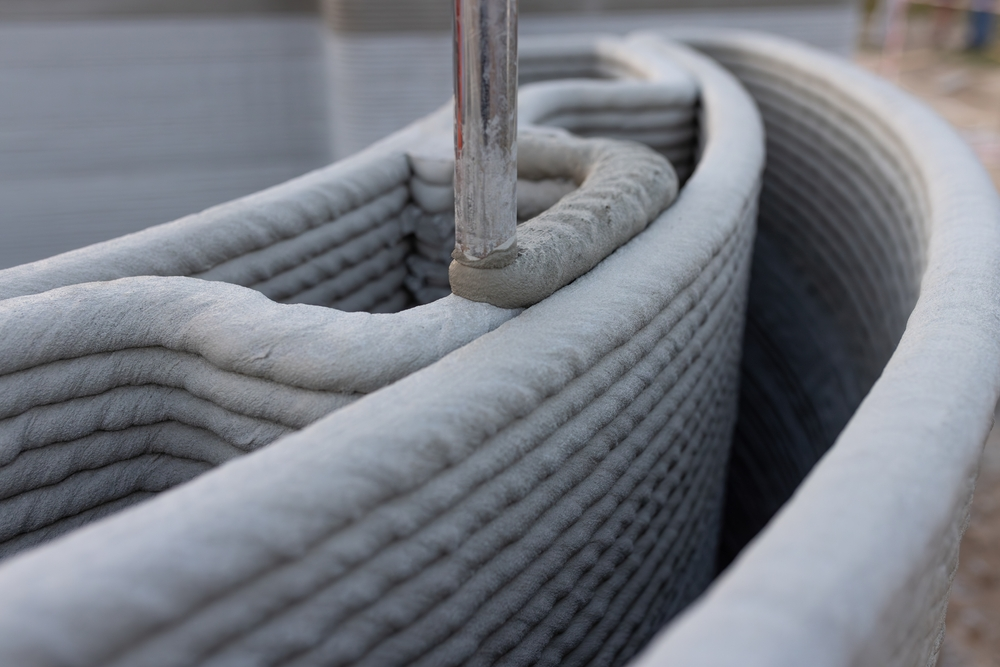
Concrete has been a crucial material in construction for centuries, but modern advancements are revolutionizing its applications. As technology evolves, so do the possibilities for stronger, more sustainable, and more efficient construction materials. At All Point Roofing and Chimney, we incorporate the latest innovations to enhance durability, sustainability, and efficiency in our projects. Let’s explore some of the most exciting breakthroughs shaping the future of concrete and what they mean for the construction industry.
1. Self-Healing Concrete
Cracks in concrete structures are a common issue, leading to costly repairs and structural weaknesses. However, self-healing concrete is changing the game. This advanced material contains bacteria or special polymers that automatically repair cracks when exposed to water. As a result, it significantly extends the lifespan of roads, bridges, and buildings while reducing maintenance costs.
Self-healing concrete is especially useful in infrastructure projects where frequent maintenance can be challenging. By improving longevity and reducing repair needs, this innovation is expected to play a major role in the future of sustainable construction.
2. 3D Printed Concrete
The rise of 3D printing has led to groundbreaking developments in concrete construction. Using robotic arms and specialized concrete mixtures, builders can now construct homes, commercial buildings, and infrastructure components more efficiently. This process reduces material waste, lowers labor costs, and speeds up construction timelines, making it a game-changer for cost-effective housing solutions.
According to Architect Magazine, many companies are already using 3D printed concrete to create complex designs that would be difficult or expensive to achieve with traditional construction methods. This technology is particularly valuable for rapid housing projects, disaster relief shelters, and architectural innovation.
3. Carbon-Negative Concrete
Traditional concrete production is one of the largest contributors to carbon emissions. However, new formulas are being developed to address this issue. Carbon-negative concrete incorporates alternative materials such as fly ash, slag, and recycled industrial waste, as well as innovative techniques to capture CO2 during production. These methods reduce the environmental footprint of concrete while maintaining its strength and durability.
As highlighted in Scientific American, carbon-negative concrete represents a major step toward more sustainable building practices. By adopting these greener alternatives, the construction industry can significantly lower its impact on the environment while still meeting the demand for durable infrastructure.
4. Ultra-High-Performance Concrete (UHPC)
Ultra-High-Performance Concrete (UHPC) is a next-generation material known for its exceptional strength, durability, and resistance to extreme conditions. Unlike traditional concrete, UHPC can withstand heavy loads, severe weather, and even fire. These properties make it an ideal choice for high-stress applications such as bridges, tunnels, military structures, and skyscrapers.
Due to its high strength-to-weight ratio, UHPC also allows for the construction of thinner and lighter structures without sacrificing stability. This not only enhances the safety and resilience of buildings but also improves their aesthetic appeal by enabling sleeker, more modern designs.
5. Transparent Concrete
A blend of concrete and optical fibers, transparent concrete is an innovation that combines structural integrity with aesthetic appeal. This material allows natural or artificial light to pass through, creating visually striking designs while maintaining strength.
Transparent concrete is increasingly being used in modern architecture to create energy-efficient buildings, unique facades, and even decorative elements in interior design. It enhances sustainability by reducing the need for artificial lighting during the day, contributing to lower energy consumption in commercial and residential buildings.
The Future of Concrete in Roofing and Chimneys
At All Point Roofing and Chimney, we continuously explore advanced concrete solutions to enhance the quality and durability of our projects. Whether it’s for roofing, chimneys, or masonry, we stay ahead of industry trends to provide the best possible results.
The innovations in concrete discussed above are paving the way for stronger, more sustainable, and more efficient construction practices. By integrating these advancements into our work, we ensure that our clients benefit from the latest materials and technologies available in the industry.
For expert concrete work and innovative construction solutions, contact All Point Roofing and Chimney today. Let’s build a stronger, more sustainable future together!

